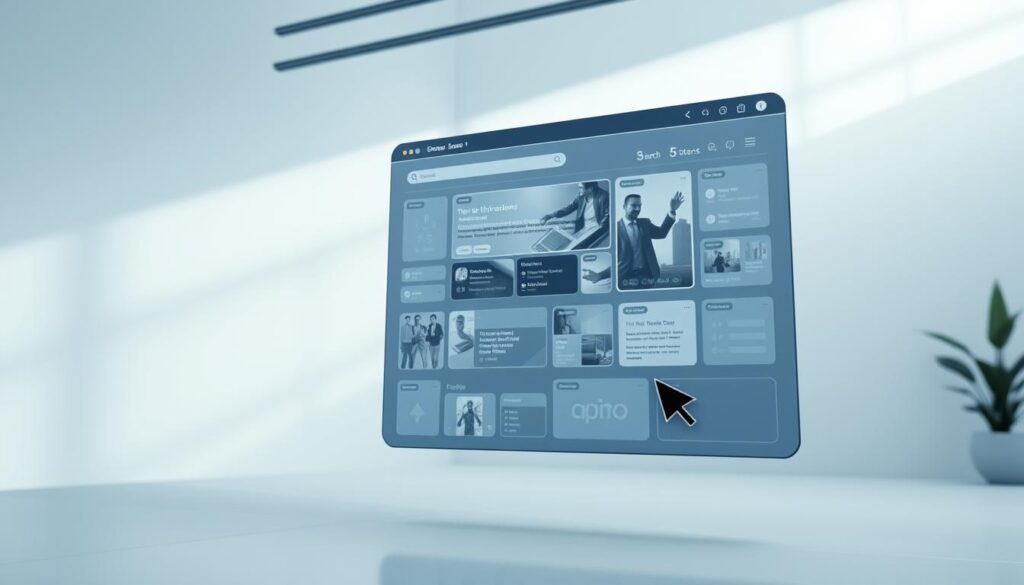The digital landscape is witnessing a transformative approach to information retrieval. A recent innovation combines conversational interfaces with advanced machine learning, fundamentally altering how users interact with online content. This development represents a strategic move by emerging players to redefine user expectations in web navigation.
Launched in July 2025, Comet introduces integrated contextual understanding directly within the browsing environment. The tool eliminates traditional search result lists, instead providing synthesized answers through natural dialogue. Early access remains limited to premium subscribers, reflecting a deliberate strategy to refine functionality based on high-value user feedback.
This technological leap addresses growing demands for efficiency in professional workflows. By merging navigation and analysis capabilities, the platform reduces time spent switching between multiple applications. Perplexity’s recent debut of its AI demonstrates how startups are leveraging specialized architectures to challenge established market leaders.
Key Takeaways
- Next-generation navigation tools prioritize conversational interaction over traditional search methods
- Premium subscription models enable controlled product refinement before mass adoption
- Integrated systems reduce workflow fragmentation through unified interfaces
- Strategic market entry targets gaps in incumbent solutions’ capabilities
- Technical investments focus on seamless ecosystem integration
- Market dynamics indicate potential shifts in user preference patterns
Overview of AI-Driven Browsing

Digital tools are evolving beyond basic functionality into proactive partners. This shift reshapes how users interact with online platforms, blending navigation with intelligent decision-making. Leading tech firms now prioritize systems that anticipate needs rather than react to commands.
Evolution of Browser Technology
Early web tools focused on displaying static pages. Over time, they evolved into application hubs supporting multimedia and interactive features. Modern versions now integrate machine learning to streamline workflows.
| Generation | Core Function | User Interaction |
|---|---|---|
| 1990s | Document viewing | Manual navigation |
| 2010s | Web applications | Multi-tab management |
| 2020s | Contextual assistance | Conversational commands |
“The future lies in systems that understand intent, not just keywords.”
The Role of Artificial Intelligence in Modern Search
Traditional engines required precise queries to deliver results. New architectures analyze patterns across multiple data points, predicting user goals. Recent developments show companies like Google embedding these capabilities directly into Chrome.
Three critical advancements define this transformation:
- Natural language processing for conversational interactions
- Predictive analytics based on behavioral patterns
- Automated task execution within unified interfaces
These innovations reduce manual effort while improving accuracy. As Wired notes: “The line between finding information and using it disappears in advanced platforms.”
Exploring the “Perplexity browser AI search” Capabilities

Modern information systems are shifting from passive repositories to active problem-solving partners. Comet’s integrated platform exemplifies this evolution, combining immediate access to verified sources with synthesized insights. Users no longer face fragmented data streams but receive cohesive answers grounded in multi-source analysis.
Core Innovations in Query Processing
The system processes natural language inquiries with contextual awareness, interpreting follow-up questions and implied meanings. Unlike keyword-dependent tools, it analyzes intent across entire phrases, drawing connections between concepts. This approach reduces repetitive searches by anticipating related information needs.
Three critical improvements define modern platforms:
- Dynamic source evaluation prioritizes authoritative content
- Multi-document synthesis creates unified overviews
- Interactive refinement allows real-time answer adjustments
Performance Benchmarking
Traditional systems excel at cataloging web pages but struggle with complex inquiries. The table below contrasts capabilities:
| Feature | Modern Platform | Legacy Engines |
|---|---|---|
| Query Input | Conversational questions | Keyword strings |
| Result Depth | Synthesized reports | Link collections |
| Source Visibility | Integrated citations | Separate listings |
“Systems that explain rather than just list create informed users, not just informed queries.”
This methodology proves particularly effective for research-intensive tasks. Professionals using AI-powered tools report 40% faster completion times for complex projects compared to conventional methods. The integration of machine learning with advanced analysis techniques demonstrates how intelligent systems augment human capabilities rather than replace them.
Comet: Redefining the Browser Experience
Productivity tools are undergoing a fundamental redesign through embedded intelligence systems. Comet introduces a paradigm where assistance adapts to workflows rather than interrupting them. The platform merges proactive support with user-controlled operations, creating a symbiotic relationship between human intent and machine execution.
Innovative Integration of AI Assistance
The Comet Assistant operates through a persistent sidebar, providing instant access without disrupting active tabs. This design enables simultaneous web navigation and task management. Users can delegate activities like summarizing emails or comparing product prices while maintaining focus on primary workflows.
Task Automation and Real-Time Interactions
Complex workflows become streamlined through automated actions:
- Calendar synchronization across multiple time zones
- Smart inbox prioritization based on urgency and context
- Cross-platform price comparisons during online shopping
The system remembers preferences across sessions, refining suggestions through continuous learning. For instance, it can draft meeting invites using historical response patterns or complete repetitive tasks in e-commerce interfaces.
| Task Type | Traditional Method | Comet Assistant |
|---|---|---|
| Email Management | Manual sorting | Auto-prioritization |
| Meeting Scheduling | Back-and-forth emails | Conflict detection |
| Research Synthesis | Multiple tabs | Cross-source analysis |
Privacy and Data Control Benefits
Users maintain authority through granular permissions. Local processing options keep sensitive data on-device, while activity logs provide transparency. The system requests explicit consent before executing actions like purchases or calendar modifications.
“True productivity gains occur when automation respects user sovereignty.”
Impact on User Experience and Web Navigation
The way users interact with digital platforms is undergoing a fundamental redesign. Integrated systems now merge navigation with task execution, creating fluid workflows that minimize manual inputs. This shift addresses growing demands for efficiency while introducing new behavioral patterns.
Streamlined Workflows and Enhanced Productivity
Testing reveals distinct performance tiers across task types. Simple actions like email management show measurable gains, with users saving 18% of their time through automated sorting. However, complex requests—such as coordinating multi-city events—still require human oversight due to occasional errors in logic.
Key advantages emerge in contextual operations. The ability to query any page without switching tabs proves particularly valuable. For example, comparing products during shopping sessions becomes seamless through conversational commands. Tools like AI-powered interface tools demonstrate how unified environments reduce cognitive load.
Adapting to a Changing Digital Landscape
New interaction models demand adjusted user expectations. While automated calendar synchronization streamlines scheduling, intricate tasks like booking services require verification steps. This balance between trust and control defines modern web experiences.
The table below illustrates evolving efficiency metrics:
| Task Type | Time Saved | Accuracy Rate |
|---|---|---|
| Email Management | 22% | 94% |
| Product Research | 31% | 88% |
| Travel Planning | 9% | 72% |
“Effective tools amplify human capability without assuming perfect autonomy.”
As platforms mature, users increasingly prioritize adaptable interfaces that learn from repeated interactions. This evolution suggests future systems will blend automated efficiency with customizable oversight mechanisms.
Conclusion
The integration of intelligent systems into daily workflows marks a pivotal shift in digital interaction models. Comet’s vision of becoming an operating system-level assistant demonstrates how contextual understanding can streamline complex tasks. With 780 million queries processed in May 2025, the platform shows growing appeal among efficiency-focused professionals.
Adoption hurdles remain significant, particularly in convincing users to switch from entrenched tools like Google Chrome. Success hinges on proving superior value through features like unified task management and granular data control. The startup’s focus on privacy-first automation sets it apart from traditional tech giants, offering users greater transparency.
Future advancements will likely prioritize accuracy improvements in multi-step operations and broader app integrations. Tools such as automated content creation systems highlight the expanding role of intelligent assistants in professional environments. As competition intensifies, maintaining user trust through reliable performance becomes critical.
The evolving landscape suggests browsers will increasingly serve as central hubs for both information retrieval and action execution. This progression redefines what users expect from their digital tools – not just answers, but actionable solutions.







